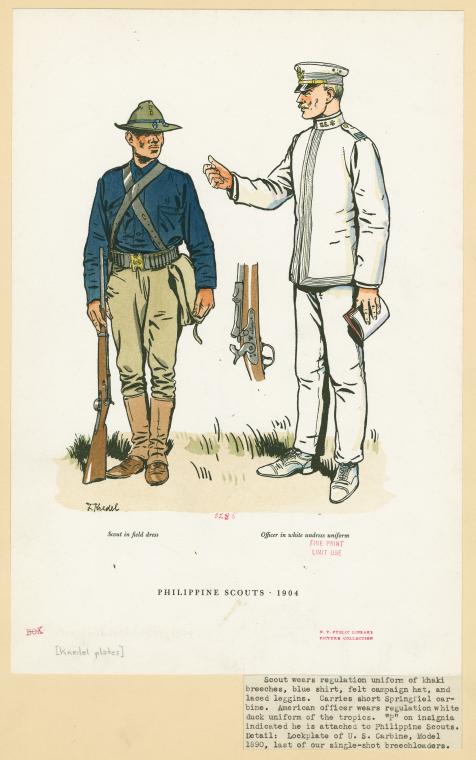
Saturday, 11 February 2012
controversial plastic figures
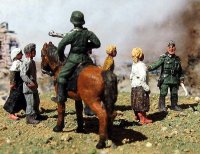 C’è una storia che meriterebbe di essere raccontata in eterno. Una storia che ora riposa sotto un memoriale in un cortile dalle parti di via Baracca, ad Arcore. È la storia di un gruppo di ragazzi poco più che maggiorenni che ha lottato contro una dittatura e un esercito invasore, alcuni sacrificando una vita appena fiorita, altri riportando ferite che non si sarebbero mai più rimarginate. Dove ora invecchia una scatola di cemento a quattro piani, sessant’anni fa si allungava un campo di aviazione, presidiato da soldati tedeschi al soldo del nazismo, li chiamavano SS. Una sera di fine dicembre, 24 ragazzi dei comuni del vimercatese hanno imbracciato mitra scadenti per liberare le loro città da un nemico verso cui il resto dello stato Italiano non aveva il coraggio di puntare il dito.
C’è una storia che meriterebbe di essere raccontata in eterno. Una storia che ora riposa sotto un memoriale in un cortile dalle parti di via Baracca, ad Arcore. È la storia di un gruppo di ragazzi poco più che maggiorenni che ha lottato contro una dittatura e un esercito invasore, alcuni sacrificando una vita appena fiorita, altri riportando ferite che non si sarebbero mai più rimarginate. Dove ora invecchia una scatola di cemento a quattro piani, sessant’anni fa si allungava un campo di aviazione, presidiato da soldati tedeschi al soldo del nazismo, li chiamavano SS. Una sera di fine dicembre, 24 ragazzi dei comuni del vimercatese hanno imbracciato mitra scadenti per liberare le loro città da un nemico verso cui il resto dello stato Italiano non aveva il coraggio di puntare il dito.E’ la storia di una notte di battaglia, di un popolo libero contro una dittatura che consumava le sue ultime feroci cartucce. Erano ragazzi come me, spesso più giovani, alcuni sono morti e hanno dato il nome alle strade delle nostre città, altri sono sopravvissuti fino a oggi, e portano con sé una storia che non dovremmo mai stancarci di raccontare.
Si parla spesso di memoria, in questi tempi, della necessità ogni ora più attuale di non lasciar spegnere il ricordo della Resistenza, di impedire che quanto è successo torni ancora. Perché per far sì che tante vite non siano andate perse invano è necessario passarci il testimone di generazione in generazione, impresa sempre più difficile, anche per colpa di chi è rimasto in disparte ad attendere l’oblio per cambiar di vestito.
C’è un tentativo in atto, un tentativo subdolo, a volte sfacciato, spesso politico, di riscrivere una Storia nuova sulle pagine sbiadite di quella autentica, di sostituire insomma il sangue con l’inchiostro. Ed è proprio per questo che sono le nuove generazioni le prime a dover stringere i denti e respingere questi attacchi. Se sapranno arginare oggi la tendenza revisionista renderanno più semplice il compito a chi verrà dopo di loro. Ora, a più di sessant’anni dalla fucilazione di Farinacci sul selciato del municipio di Vimercate, per la prima volta mi trovo ad affrontare il pericolo di un cedimento della memoria alle spinte revisioniste. E senza la vostra memoria, senza il reiteramento del ricordo di tutti, una barriera che fino a oggi è stata intoccabile andrà sgretolandosi come terra al vento.
Negli ultimi anni ci sono stati parecchi dibattiti attorno ai libri scritti da Gianpaolo Pansa. Ora, questo non è il momento né il luogo per discutere del contenuto di questi scritti. Ma voglio lo stesso fare un piccola considerazione su questa faccenda, perché rientra esattamente nel discorso che stiamo facendo oggi.
Pansa, antifascista, ha intitolato il suo libro più famoso Il Sangue dei Vinti. Titolo che si riferisce all’uccisione di gerarchi fascisti da parte di partigiani anche dopo che la guerra era finita.
Vinti. Parla di Vinti. Come in una qualsiasi guerra, come se si trattasse di Romani contro Cartaginesi, i Romani conquistano Cartagine e ci entrano da vincitori, gli altri abbassano la testa sconfitti, vinti. Poi penso all'Italia, al Fascismo, alla Repubblica Sociale di Salò, all'invasione Nazista, all'esercito Partigiano di Liberazione. Ed ecco che la parola sfodera i suoi artigli, nel giro di poche lettere i fascisti sono passati da dittatori a Vinti, da squadristi a vittime, da sovrani a invasi. E' un meccanismo perverso, silenzioso, che scavalca l'attenzione più in fretta della memoria storica, ti salta al collo e chiede pietà. I Vinti suscitano tenerezza, compassione, i Vinti non possono confondersi con gli oppressori, non possiamo permetterlo. In italia c'è stata una dittatura, una DITTATURA, ragazzi, con tanto di assassinii, soppressione della libertà di stampa e leggi razziste. Parliamo di regime allora, di errori storici, di vergogna. Chiamateli disgraziati, se proprio volete. Ma mai, né oggi né in futuro, non vi azzardate a chiamarli Vinti.
Da anni mi interrogo sul significato della memoria storica e sulla soluzione da adottare per renderla eterna. E allora mi tornano alla mente i poemi epici, e prima ancora gli aedi, i cantori professionisti dell’epoca greca, che impegnavano la propria vita a farsi messaggio e messaggeri della Storia, senza poter usufruire di un testo scritto, ma affidandosi completamente alla propria memoria. Penso al loro rendere favola la tragedia, a rendere immortale la morte di migliaia e migliaia di esseri umani. Il loro era un compito difficile, che veniva rispettato e riconosciuto da tutta la cittadinanza. L’aedo era intoccabile, poichè portatore di Verità.
Oggi Verità è una parola abusata, sfruttata come arma e come spauracchio, mitragliata come sprone e dispensata in dosi massicce come sedativo. E’ l’epoca della svalutazione delle parole, realtà intangibili, astratte come libertà e democrazia sono state svuotate del loro significato, rese pericolose. E’ il momento di nuovi aedi, di scrittori, cantautori che si affianchino a storici e giornalisti nel primo vero sforzo per rabboccare il calice vuoto della verità storica. L’Italia è un paese ricco di storia ma povero di memoria, ha bisogno di costante ripasso, di gente che racconti. E allora ascoltiamo, noi che abbiamo il prezioso privilegio di prestare orecchio a chi questa storia l’ha scritta con i denti e con le lacrime. Ascoltiamo e prepariamoci a raccontare, a diventare ognuno di noi aedo della nostra storia.
Consci del fatto che questa volta non si tratta di narrare le gesta di un popolo guerriero, ma del guizzo vitale di ragazzi partigiani che hanno saputo liberare una terra e dare un significato concreto alla parola Libertà.
Friday, 10 February 2012
aleander nevsky
 St. Alexander Nevsky was Russia's "knight in shining armor." His reputation as a man of exceptional valor and surpassing virtue inspired a visit by a German commander who told his people when he returned: "I went through many countries and saw many people, but I have never met such a king among kings, nor such a prince among princes." The Russians called him their "prince without sin."
St. Alexander Nevsky was Russia's "knight in shining armor." His reputation as a man of exceptional valor and surpassing virtue inspired a visit by a German commander who told his people when he returned: "I went through many countries and saw many people, but I have never met such a king among kings, nor such a prince among princes." The Russians called him their "prince without sin."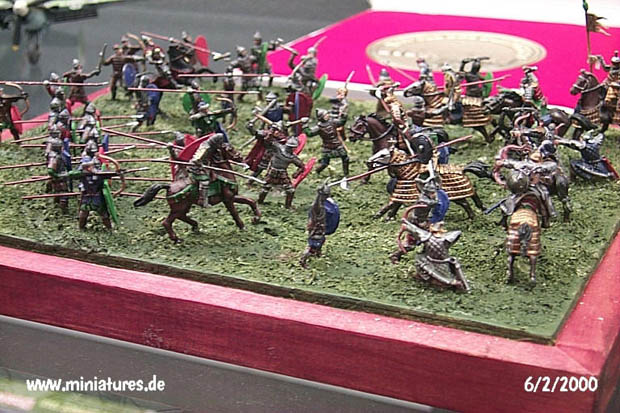
He was born just four years before the fierce Tatars, under the leadership of Ghengis Khan, came galloping across the steppes of Kievan Rus'.  The once flourishing city state--whose social, cultural and spiritual achievements boasted few rivals in Western Europe--had been weakened by quarrelling princes and attacks of warring tribes, and it was an easy prey for the massacring and pillaging Asiatic aggressors. Fortunately, the Mongol Horde's primary interest in conquest was financial gain, and although it imposed a heavy tax on its subjects, they were left to govern themselves and retained their traditions and religion intact, Nevertheless, the yoke of foreign sovereignty was
The once flourishing city state--whose social, cultural and spiritual achievements boasted few rivals in Western Europe--had been weakened by quarrelling princes and attacks of warring tribes, and it was an easy prey for the massacring and pillaging Asiatic aggressors. Fortunately, the Mongol Horde's primary interest in conquest was financial gain, and although it imposed a heavy tax on its subjects, they were left to govern themselves and retained their traditions and religion intact, Nevertheless, the yoke of foreign sovereignty was  burdensome; individual princes were reduced to acting as feudal landlords for their Mongol lords, and inclinations toward s national unity--the dream of Grand Prince Vladimir--were stifled. A strong leader was needed if the land of Rus' was to have any hope of healing internal strife, of throwing off the Tatar yoke, and establishing its identity as a nation state.
burdensome; individual princes were reduced to acting as feudal landlords for their Mongol lords, and inclinations toward s national unity--the dream of Grand Prince Vladimir--were stifled. A strong leader was needed if the land of Rus' was to have any hope of healing internal strife, of throwing off the Tatar yoke, and establishing its identity as a nation state.
 The once flourishing city state--whose social, cultural and spiritual achievements boasted few rivals in Western Europe--had been weakened by quarrelling princes and attacks of warring tribes, and it was an easy prey for the massacring and pillaging Asiatic aggressors. Fortunately, the Mongol Horde's primary interest in conquest was financial gain, and although it imposed a heavy tax on its subjects, they were left to govern themselves and retained their traditions and religion intact, Nevertheless, the yoke of foreign sovereignty was
The once flourishing city state--whose social, cultural and spiritual achievements boasted few rivals in Western Europe--had been weakened by quarrelling princes and attacks of warring tribes, and it was an easy prey for the massacring and pillaging Asiatic aggressors. Fortunately, the Mongol Horde's primary interest in conquest was financial gain, and although it imposed a heavy tax on its subjects, they were left to govern themselves and retained their traditions and religion intact, Nevertheless, the yoke of foreign sovereignty was  burdensome; individual princes were reduced to acting as feudal landlords for their Mongol lords, and inclinations toward s national unity--the dream of Grand Prince Vladimir--were stifled. A strong leader was needed if the land of Rus' was to have any hope of healing internal strife, of throwing off the Tatar yoke, and establishing its identity as a nation state.
burdensome; individual princes were reduced to acting as feudal landlords for their Mongol lords, and inclinations toward s national unity--the dream of Grand Prince Vladimir--were stifled. A strong leader was needed if the land of Rus' was to have any hope of healing internal strife, of throwing off the Tatar yoke, and establishing its identity as a nation state.
The baneful effect of internal dissension was a lesson which came early to Prince Alexander, as he witnessed his father, Prince Yaroslav Vsevolodovich, struggle with the proudly independent spirited boyars of Novgorod, It was there that the boy grew up. Like most noble youth s of his time, he had barely learned to walk before he was lifted into the saddle. Training in the martial arts was combined with an education based upon the Scriptures. Under the influence of his mother, who was popularly called "the holy queen" on account of her piety and charitable deeds, the young prince developed a profound spiritual life. He engrossed himself for hours in reading the Old and New Testaments.
He was still an adolescent when in 1236 his father became Grand Prince of Kiev (a position of primacy among the princes), leaving Alexander in charge of Novgorod. Its characteristically unruly citizenry was gradually won over by the uncommon wisdom and youthful charm of its new ruler. Meanwhile, the Tatars were moving north; they overran Ryazan, Moscow and the Russian capital of that time, Vladimir. They were prevented from reaching Novgorod only by the surrounding marshes. But the city was spared this disaster only to face a greater threat, this time from the west.
Encouraged by the Roman Pope who desired the conversion of Russia to Catholicism, the Swedes and Germans took advantage of Russia's weakened state and prepared to attack. As a staunch Orthodox Christian, Alexander recognized that conquest from the west would deal a mortal blow at the very heart of Russia—the Orthodox Church, a fate incomparably worse than political subjugation by the Tatars. In 1210, well armed Swedish troops moved onto Novgorod territory. Preparing his men to repel the invaders, St. Alexander encouraged them with his now famous affirmation: "God is not in might but in Truth. 'Some trust in princes and some in horses, but we will call upon the Lord our God.'" The Russian forces, their Prince in the lead, were crowned with success after a fierce battle on the shores of the Neva.
Victories followed against the Livonian Germans and the Lithuanians. The Russian north-east, devastated by the Tatars, looked with hope upon the young warrior prince. His fame reached the ears of the Mongol lord, Khan Batu, who desired to see this Russian hero. It was a perilous honor. Before being presented to the Khan, the Russian princes--whose authority depended on his approval--were required to fulfill certain pagan traditions: walk through fire, bow down to a bush and to the shadows of deceased khans, etc. Alexander would in nowise consent to such idolatry and, strengthened by Holy Unction, prepared himself to accept the death penalty which Prince Michael of Chernigov had paid under similar circumstances.
Arriving in the Golden Horde' s capital at the mouth of the Volga, Alexander at once confessed his Christian convictions: "O King," he said, bowing before the Khan, "I bow before you because God has favored you with authority, but I shall not bow before any created thing. I serve the One God. Him alone do I honor and Him alone do I worship." Khan Batu was so impressed by the courage and handsome demeanor of the young prince that to everyone's amazement he accepted his refusal and received him with due honor.
Gaining the respect of the Khan was a triumph for Alexander, but it did not insure peace. The remaining course of his life as Grand Prince of Russia was spent in securing its western borders against persistent German campaigns, in subduing the Novgorodians' defiant opposition to the Khan's poll tax, and in diplomatically placating the Khan’s anger which flared intermittently in response to indiscretions committed by the lesser princes. Although it was 200 years before Russia was free of Tatar control, St. Alexander’s skill and self-sacrificing devotion which he brought to the Herculean task set before him as ruler, and his commitment to the preservation of Orthodoxy at the core of a growing national consciousness, made him a hero of both historic and spiritual dimensions. He died as he was returning from one of his exhausting journeys to the Khan, having taken the Great Schema on his death bed. His respected spiritual advisor, Metropolitan Cyril, was serving the Divine Liturgy in Vladimir when he saw the Prince’s soul being carried aloft by angels and announced to those present: “Brethren, know that the sun of the Russian Land has now set.” In 1547 St. Alexander was glorified by the Church which celebrates his memory on the day of his repose, November 23, and the day of the translation of his incorrupt relics, August 30, 1724, to the St. Alexander Nevsky Lavra in St. Petersburg, where they rest to this day.
Thursday, 9 February 2012
us cavalry
in 1832, Congress formed the United States Mounted Ranger Battalion to protect settlers along the east bank of the
 Mississippi River and to keep the Santa Fe trail open. The battalion comprised volunteers organized into six companies of 100 men. To correct what was perceived as a lack of discipline, organization and reliability, Congress formed the United States Regiment of Dragoons as a regular force in 1833, consisting of 10 companies (designated A through K) with a total of 750 men. The Regiment fought against the Seminole nation in 1835, when Chief Osceola
Mississippi River and to keep the Santa Fe trail open. The battalion comprised volunteers organized into six companies of 100 men. To correct what was perceived as a lack of discipline, organization and reliability, Congress formed the United States Regiment of Dragoons as a regular force in 1833, consisting of 10 companies (designated A through K) with a total of 750 men. The Regiment fought against the Seminole nation in 1835, when Chief Osceola 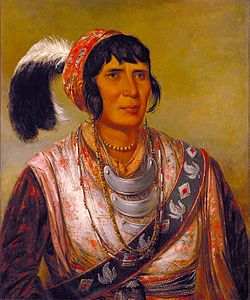 led warriors from his tribe in the Second Seminole War in protest to the Treaty of Payne's Landing.In 1832, a few Seminole chiefs
led warriors from his tribe in the Second Seminole War in protest to the Treaty of Payne's Landing.In 1832, a few Seminole chiefs 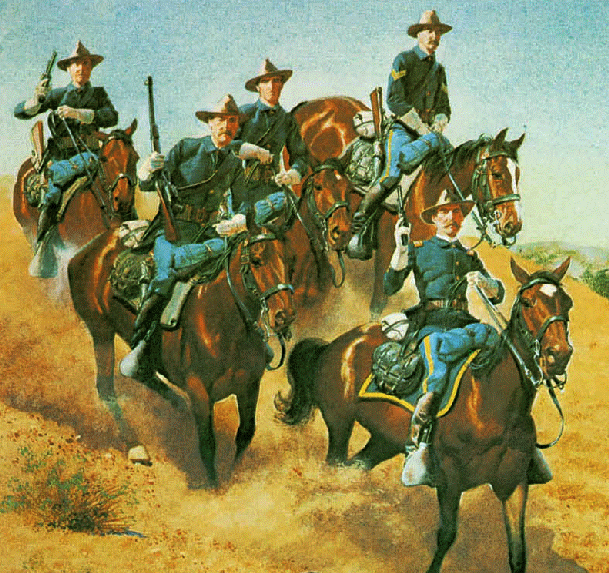 signed the Treaty of Payne's Landing, by which they agreed to give up their Florida lands in exchange for lands west of the Mississippi River. Five of the most important of the Seminole chiefs, including Micanopy of the Alachua
signed the Treaty of Payne's Landing, by which they agreed to give up their Florida lands in exchange for lands west of the Mississippi River. Five of the most important of the Seminole chiefs, including Micanopy of the Alachua ![[small_The-Silenced-War-Whoop.jpg]](https://blogger.googleusercontent.com/img/b/R29vZ2xl/AVvXsEjoj0FUjAMXOvhwDflCjc3C-BRiqNJB2bDEsm9BzKFomBBDXTGIqFy1AbrpimjAJqx1pnTp5BdCKfHwg_F5AIYQXIvLIZdBckgP4akusYiZW9lOnCnQWGTL9XFbzI5F6KRy-mhj1FXSCM8/s1600/small_The-Silenced-War-Whoop.jpg) Seminoles, did not agree to the move. In retaliation, Native American agent Wiley Thompson declared that those chiefs were removed from their positions. As relations with the Seminoles deteriorated, Thompson forbade the sale of guns and
Seminoles, did not agree to the move. In retaliation, Native American agent Wiley Thompson declared that those chiefs were removed from their positions. As relations with the Seminoles deteriorated, Thompson forbade the sale of guns and ![[Custer's+Demand+1.jpg]](https://blogger.googleusercontent.com/img/b/R29vZ2xl/AVvXsEhNqZs1fnLSwxWqxT1TQBQNZLMCA99HxEKzLAzga7uwwrcAVtURmqy5VOisCm3bthmapxnqi3_mp98GnV1b7PJDGw3D_RvqY6YSgkoDLnP54USijJtNKWWstUhJ1Fj67ZMbrKhJQ8Yk5io/s1600/Custer's+Demand+1.jpg) ammunition to the Seminoles. Osceola, a young warrior beginning to rise to prominence, was particularly upset by the ban, as he felt it equated Seminoles with slaves.
ammunition to the Seminoles. Osceola, a young warrior beginning to rise to prominence, was particularly upset by the ban, as he felt it equated Seminoles with slaves.![[The+Duel.jpg]](https://blogger.googleusercontent.com/img/b/R29vZ2xl/AVvXsEjKiGWiCOC8jbZ3oFxfzySAKpMP4Mz1JjODOPv1xaMea5NLXLVN9p7zSiQctBjFNorbJhDbMz4nlyzpIkulP-8FAwljIh6q1kvhSnobGmLlQ4hMTZeSP1WbTnYKnwo43ktmS3zji3AfVWo/s640/The+Duel.jpg)
Osceola had two wives and at least five children. One of his wives was a black woman, and he fiercely opposed the enslavement of free peoples.(Katz 1986) In spite of this, Thompson considered Osceola to be a friend, and gave him a rifle. Later, though, when Osceola quarreled with Thompson,
![[small_Breaking+Through+The+Line.jpg]](https://blogger.googleusercontent.com/img/b/R29vZ2xl/AVvXsEhRDiU4oaIept7icq1zyK0_Xr7ybv3NxpM9V4WYLsbr5IO3nDj8VAUxsMeXtNiwmWMzQeWuZ79pudSyJ6zL9HyFUumsBOxYVAsdQbscIuqKq6ZiF6FjF4lOQoGLMKausWrbmoNv4fKKZyg/s640/small_Breaking+Through+The+Line.jpg) Thompson had him locked up at Fort King
Thompson had him locked up at Fort King for a night. The next day, to get released, Osceola agreed to abide by the Treaty of Payne's Landing and to bring his followers in. On December 28, 1835 Osceola and his followers ambushed and killed Wiley Thompson and six others outside of Fort King while another group of Seminoles ambushed and wiped out a column of US Army troops marching up from
for a night. The next day, to get released, Osceola agreed to abide by the Treaty of Payne's Landing and to bring his followers in. On December 28, 1835 Osceola and his followers ambushed and killed Wiley Thompson and six others outside of Fort King while another group of Seminoles ambushed and wiped out a column of US Army troops marching up from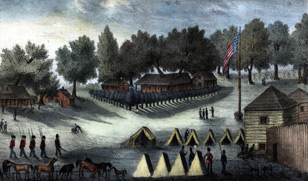 Fort Brooke to Fort King.
Fort Brooke to Fort King. These near-simultaneous attacks began the Second Seminole War For a year, the established units had difficulty
These near-simultaneous attacks began the Second Seminole War For a year, the established units had difficulty 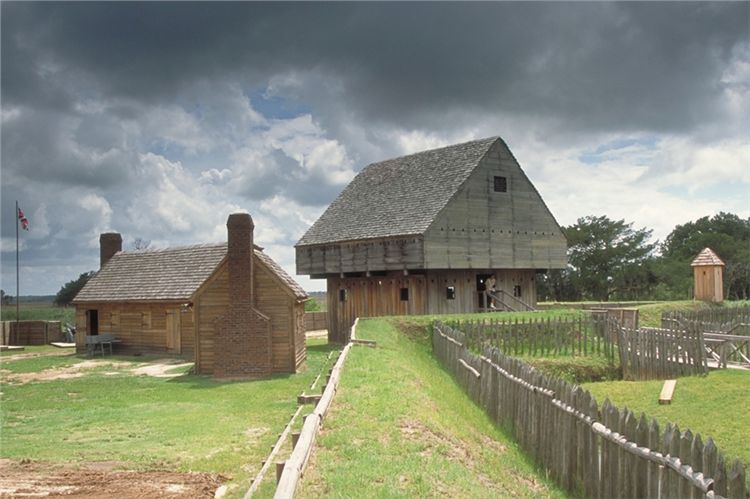 containing the Indians. Congress responded by establishing the 2nd United States Regiment of Dragoons in
containing the Indians. Congress responded by establishing the 2nd United States Regiment of Dragoons in  1836On October 21, 1837, on the orders of U.S. General Thomas Sidney Jesup,
1836On October 21, 1837, on the orders of U.S. General Thomas Sidney Jesup,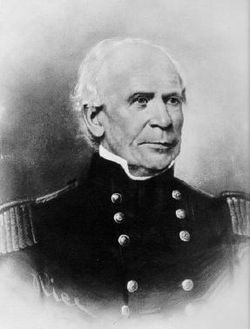 Osceola was captured when he arrived for supposed truce negotiations in Fort Payton. He was imprisoned at
Osceola was captured when he arrived for supposed truce negotiations in Fort Payton. He was imprisoned at  Fort Marion,
Fort Marion,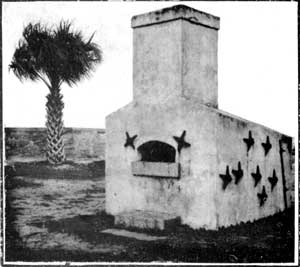 St. Augustine, Florida.
St. Augustine, Florida. Osceola's capture by deceit caused a national uproar. General Jesup and the
Osceola's capture by deceit caused a national uproar. General Jesup and the administration were condemned. That December, Osceola and other Seminole prisoners were moved to Fort Moultrie, South Carolina. They were visited by townspeople.
administration were condemned. That December, Osceola and other Seminole prisoners were moved to Fort Moultrie, South Carolina. They were visited by townspeople.
George Catlin and other prominent painters met him and persuaded him to pose. Robert J. Curtis painted an oil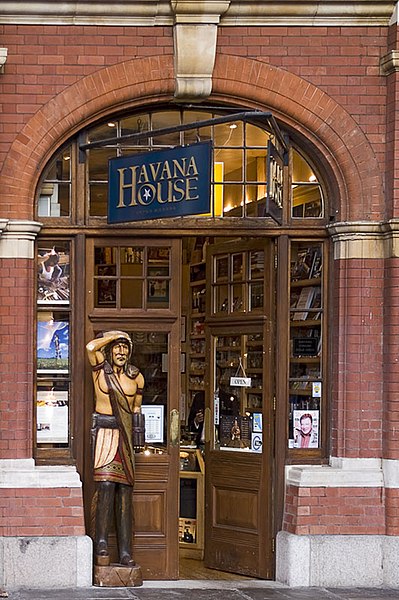 portrait of Osceola as well. These pictures inspired a number of other prints, engravings, and even cigar store
portrait of Osceola as well. These pictures inspired a number of other prints, engravings, and even cigar store fort marion below
fort marion below figures. Afterward numerous landmarks, including Osceola Counties in Florida, Iowa, and Michigan, were named after him, along with Florida's Osceola National Forest.
figures. Afterward numerous landmarks, including Osceola Counties in Florida, Iowa, and Michigan, were named after him, along with Florida's Osceola National Forest.
Osceola died of malaria on January 30, 1838, less than three months after his capture.He was buried with military honors at Fort Moultrie. portrait of Osceola as well. These pictures inspired a number of other prints, engravings, and even cigar store
portrait of Osceola as well. These pictures inspired a number of other prints, engravings, and even cigar store fort marion below
fort marion below figures. Afterward numerous landmarks, including Osceola Counties in Florida, Iowa, and Michigan, were named after him, along with Florida's Osceola National Forest.
figures. Afterward numerous landmarks, including Osceola Counties in Florida, Iowa, and Michigan, were named after him, along with Florida's Osceola National Forest.
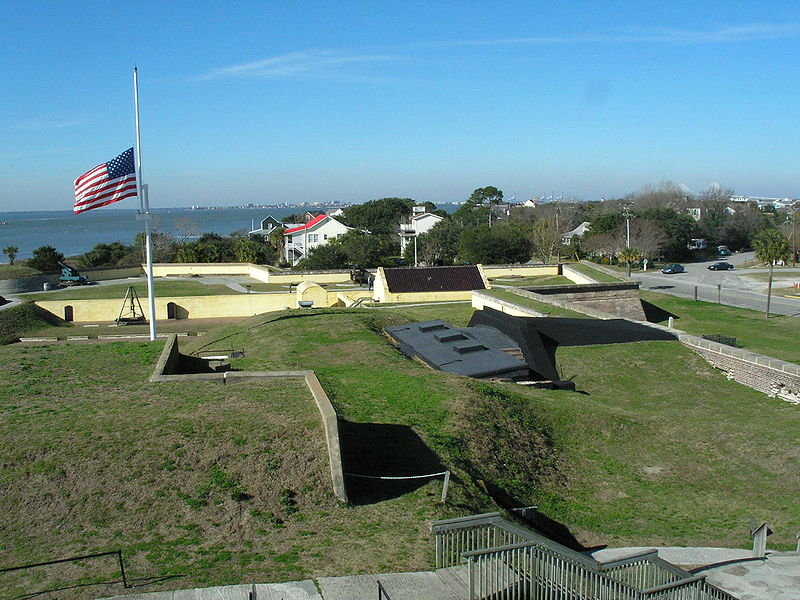 .The U.S. Cavalry played a prominent role in the American Indian
.The U.S. Cavalry played a prominent role in the American Indian 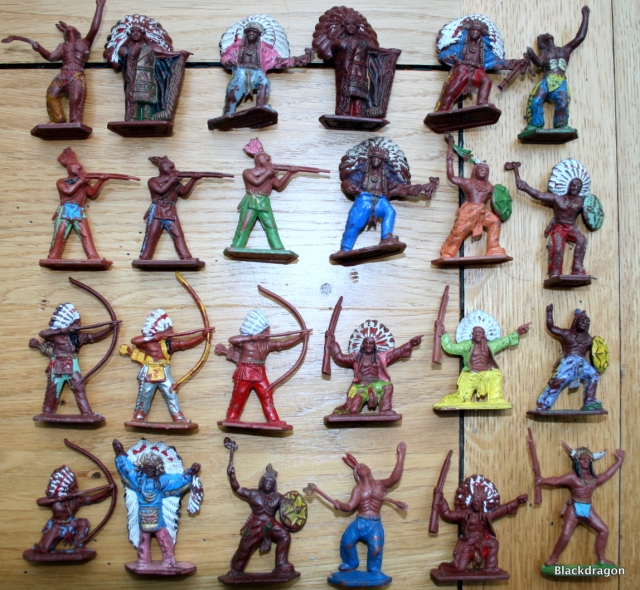 Wars particularly in the American Old West. Particularly notable were the 7th Cavalry, associated with GeneralGeorge Armstrong Custer
Wars particularly in the American Old West. Particularly notable were the 7th Cavalry, associated with GeneralGeorge Armstrong Custer and the Battle of the Little Bighorn and the 9th and 10th Cavalry,
and the Battle of the Little Bighorn and the 9th and 10th Cavalry,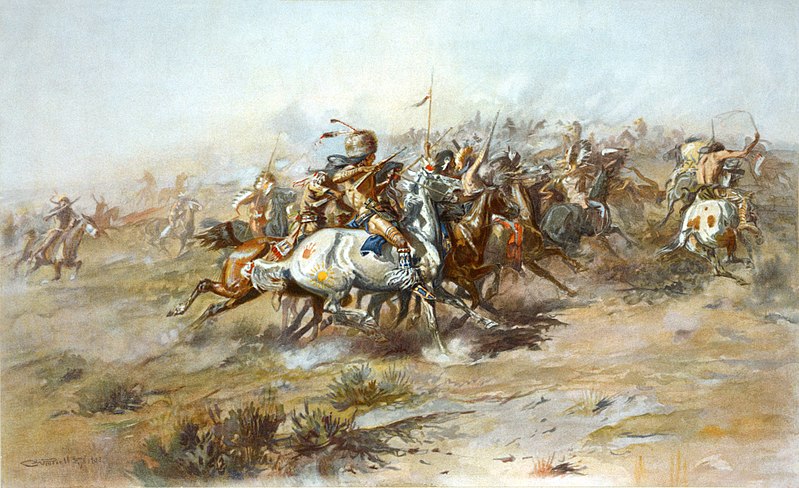 the Buffalo Soldiers. Infantry units, called by the Indians "walkaheaps", were also involved and in some cases were
the Buffalo Soldiers. Infantry units, called by the Indians "walkaheaps", were also involved and in some cases were
lacking training and skill in horsemanship and cavalry tactics.
Labels:
wild west
Wednesday, 8 February 2012
Vera cruz
 The city of Veracruz is a major port city and municipality on the Gulf of Mexico in the Mexican state of Veracruz. The city is located in the central part of the state. It is located 90 km (56 mi) along Federal Highway 140 from the state capital Xalapa, and is the state's most populous city. The city's population is actually greater than the municipality's population, since part of the city extends into neighboring Boca del Río Municipality.
The city of Veracruz is a major port city and municipality on the Gulf of Mexico in the Mexican state of Veracruz. The city is located in the central part of the state. It is located 90 km (56 mi) along Federal Highway 140 from the state capital Xalapa, and is the state's most populous city. The city's population is actually greater than the municipality's population, since part of the city extends into neighboring Boca del Río Municipality. At the 2010 census there were 554,830 inhabitants total, 428,323 in Veracruz Municipality and 126,507 in Boca del Río Municipality.[Veracruz is Mexico’s oldest and largest port and the port most connected with its history.
At the 2010 census there were 554,830 inhabitants total, 428,323 in Veracruz Municipality and 126,507 in Boca del Río Municipality.[Veracruz is Mexico’s oldest and largest port and the port most connected with its history.Hernán Cortés arrived to Mexico here in 1519, founding the city with the name of Villa Rica de la Vera Cruz, due to the area’s gold and because they landed on Good Friday. This settlement became the first on the American mainland and the first to receive a coat-of-arms. During the colonial period, this city had the largest mercantile class and at times was richer than Mexico City. This wealth made it attractive to pirates, against which fortifications such as Fort San Juan de Ulúa were built. In the 19th century, Veracruz saw a number of invasions, mostly by France and the United States with the last invasion occurring in 1914. For much of the 20th century, the production of petroleum was more important for the state,but in the latter twentieth century and into the twenty-first, the port has re-emerged as the main economic engine, becoming the main port for most of Mexico’s imports and exports, especially for the automotive industry.
Veracruz’s status as a port has made the city a blend of cultures, mostly indigenous, Spanish and Afro-Cuban. The influence of these three is best seen in the food and music of the area, which has strong Spanish, Caribbean and African influences The Battle of Veracruz was a 20-day siege of the key Mexican beachhead seaport of Veracruz, during the Mexican-American War.
The Battle of Veracruz was a 20-day siege of the key Mexican beachhead seaport of Veracruz, during the Mexican-American War.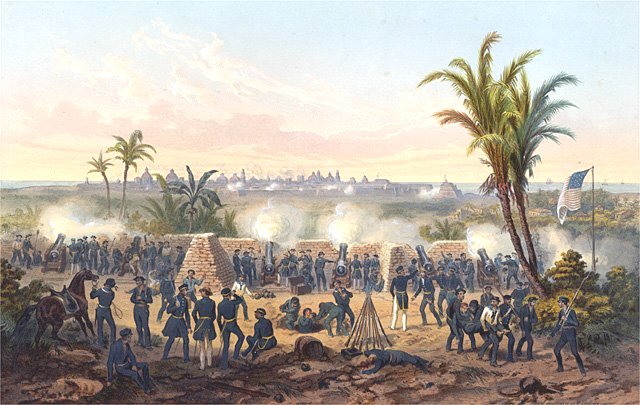 Lasting from 9-29 March 1847, it began with the first large-scale amphibious assault conducted by United States military forces, and ended with the surrender and occupation of the city. U.S. forces then marched inland to Mexico City.
Lasting from 9-29 March 1847, it began with the first large-scale amphibious assault conducted by United States military forces, and ended with the surrender and occupation of the city. U.S. forces then marched inland to Mexico City. After the battles of Monterrey
After the battles of Monterrey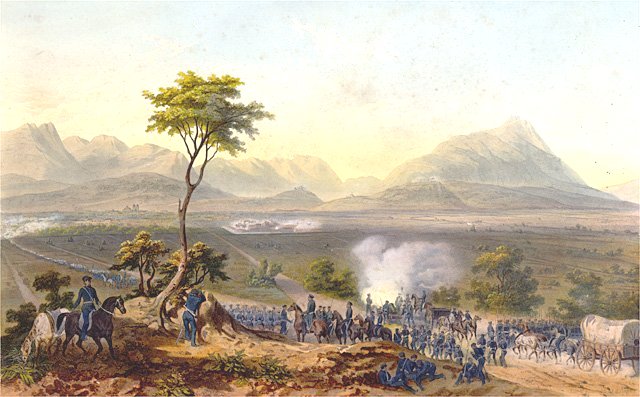 and Buena Vista,
and Buena Vista, fighting in northern Mexico subsided. Much of Zachary Taylor's Army of Occupation
fighting in northern Mexico subsided. Much of Zachary Taylor's Army of Occupation  was transferred to the command of Major General Winfield Scott
was transferred to the command of Major General Winfield Scott  after the battle of Monterrey. After deliberating on the next course of action,
after the battle of Monterrey. After deliberating on the next course of action, Scott and other Washington officials came to the agreement that a landing would be made at Veracruz, which would provide the Americans a point for a further advance inland.
Scott and other Washington officials came to the agreement that a landing would be made at Veracruz, which would provide the Americans a point for a further advance inland. Mexican military intelligence knew in advance of U.S. plans to attack Veracruz, but internal government turmoil left them powerless to send crucial reinforcements before the American assault commenced.
Mexican military intelligence knew in advance of U.S. plans to attack Veracruz, but internal government turmoil left them powerless to send crucial reinforcements before the American assault commenced.
Vera Cruz is a 1954 American Technicolor Western starring Gary Cooper and Burt Lancaster
 , about the French intervention in Mexico and the use of american mercenaries and it also featured Denise Darcel
, about the French intervention in Mexico and the use of american mercenaries and it also featured Denise Darcel , Sara Montiel
, Sara Montiel , and Cesar Romero
, and Cesar Romero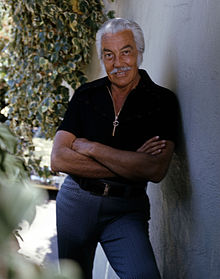 . The movie was directed by Robert Aldrich from a story by Borden Chase. The film's amoral characters and cynical attitude toward violence .- there is a big battle between the american mercenaries and french lancers.(including a scene where
. The movie was directed by Robert Aldrich from a story by Borden Chase. The film's amoral characters and cynical attitude toward violence .- there is a big battle between the american mercenaries and french lancers.(including a scene where  Lancaster's character threatens to murder child hostages) were considered shocking at the time and influenced future Westerns such as The Magnificent Seven,
Lancaster's character threatens to murder child hostages) were considered shocking at the time and influenced future Westerns such as The Magnificent Seven, The Wild Bunch, and the films of Sergio Leone.
The Wild Bunch, and the films of Sergio Leone.Another film featuring the intervention was Major Dundee where Charlton Heston leads a band of mixed military over the border to chase Apaches only to end up embroiled in the war.Above is Richard Harris.Senta Berger was the romance angle.
 The French intervention in Mexico also known as The Maximilian Affair, War of the French Intervention, and The Franco-Mexican War, was an invasion of Mexico by an expeditionary force sent by the Second French Empire
The French intervention in Mexico also known as The Maximilian Affair, War of the French Intervention, and The Franco-Mexican War, was an invasion of Mexico by an expeditionary force sent by the Second French Empire , supported in the beginning by the United Kingdom and the Kingdom of Spain. It followedPresident Benito Juárez's
, supported in the beginning by the United Kingdom and the Kingdom of Spain. It followedPresident Benito Juárez's  suspension of interest payments to foreign countries on 17 July 1861, which angered Mexico's major creditors: Spain, France and Britain.
suspension of interest payments to foreign countries on 17 July 1861, which angered Mexico's major creditors: Spain, France and Britain.Napoleon III of France was the instigator. His foreign policy was based on a commitment to free trade. For him, a friendly government in Mexico provided an opportunity to expand free trade by ensuring European access to important markets, and preventing monopoly by the United States. Napoleon also needed the silver that could be mined in Mexico to finance his empire. Napoleon built a coalition with Spain and Britain at a time the U.S. was engaged in a full-scale civil war. The U.S. protested but could not intervene directly until its civil war was over in 1865.
The three powers signed the Treaty of London on October 31, to unite their efforts to receive payments from Mexico. On 8 December the Spanish fleet and troops from Spanish-controlled Cuba arrived at Mexico's main Gulf port, Veracruz. When the British and Spanish discovered that the French planned to invade Mexico, they withdrew.
The subsequent French invasion resulted in the Second Mexican Empire, which was supported by the Roman Catholic clergy, many conservative elements of the upper class, and some indigenous  communities; when the presidential terms of Benito Juárez (1858–71) were interrupted by the rule of the Habsburg monarchy in Mexico (1864–67). Conservatives, and many in theMexican nobility, tried to revive the monarchical form of government (see: First Mexican Empire)
communities; when the presidential terms of Benito Juárez (1858–71) were interrupted by the rule of the Habsburg monarchy in Mexico (1864–67). Conservatives, and many in theMexican nobility, tried to revive the monarchical form of government (see: First Mexican Empire)  when they helped to bring to Mexico an archduke from the Royal House of Austria, Maximilian Ferdinand, or Maximilian I of Mexico .photos of french troops from blog pauly wauly, great blog to check out
when they helped to bring to Mexico an archduke from the Royal House of Austria, Maximilian Ferdinand, or Maximilian I of Mexico .photos of french troops from blog pauly wauly, great blog to check out (who married Charlotte of Belgium, also known as Carlota of Mexico), with the military support of France.
(who married Charlotte of Belgium, also known as Carlota of Mexico), with the military support of France.
France had various interests in this Mexican affair, such as seeking reconciliation with Austria, which had been defeated during the Franco-Austrian War, counterbalancing the growing U.S. power by developing a powerful Catholic neighbouring empire, and exploiting the rich mines in the north-west of the country.

Subscribe to:
Comments (Atom)
